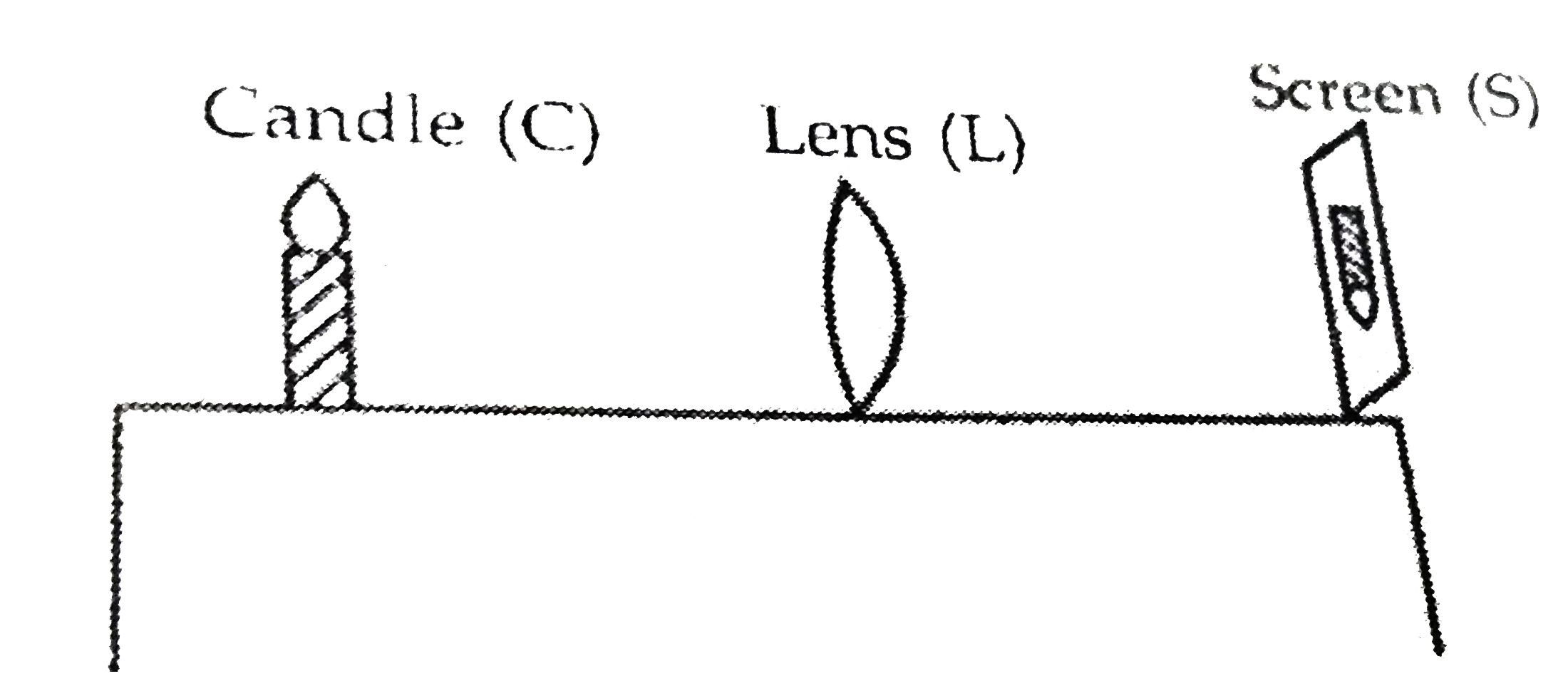In an experiment to determine the focal length of a convex lens, a student obtained a sharp inverted image of a distant tree on the screen behind the lens. She then removed the screen and looked through the lens in the direction of the object. What will she observe?
The screen is just a device to observe the real image formed by a convex lens. The image of a distant object continues to get formed at focus of the convex lens even when no screen is being used to show its formation.
Topper's Solved these Questions
- BOOK - VK GLOBAL PUBLICATIONCHAPTER - PRACTICAL BASED QUESTIONSEXERCISE - Experiment 114videos
PRACTICAL BASED QUESTIONS
- BOOK - VK GLOBAL PUBLICATIONCHAPTER - PRACTICAL BASED QUESTIONSEXERCISE - Experiment 126videos
PRACTICAL BASED QUESTIONS
- BOOK - VK GLOBAL PUBLICATIONCHAPTER - PRACTICAL BASED QUESTIONSEXERCISE - Experiment 94videos
PRACTICAL BASED QUESTIONS
- BOOK - VK GLOBAL PUBLICATIONCHAPTER - MANAGEMENT OF NATURAL RESOURCESEXERCISE - HOTS (Higher Order Thinking Skills)7videos
MANAGEMENT OF NATURAL RESOURCES
- BOOK - VK GLOBAL PUBLICATIONCHAPTER - SOURCES OF ENERGY EXERCISE - SHORT ANSWER QUESTIONS - II16videos
SOURCES OF ENERGY
Similar Questions
While performing the experiment on the determination of focal length of a convex lens, four students obtained the image of the same distant tree on the screen :
Which diagram shows the formation of image correctly ?
 View Solution
View SolutionA convex lens is used to obtain a magnified image of an object on a screen 10 m from the lens. If the magnification is 19, find the focal length of the lens.
View Solution
Knowledge Check
- Question 1 - Select One
While performing an experiment on determining the focal length of a convex lens, a student obtains a sharp inverted image of the laboratory window grill on the screen and measures the distance between the screen and the lens. She then repeats the experiment and takes a distant tree as the object in the second case. In order to get a sharp image of the tree on the screen, she will now have to move the screen :
Aslightly nearer to the lensBslightly farther away from the lensCvery close to the lensDvery far away from the lens - Question 2 - Select One
A student performs an experiment to estimate the focal length of a convex lens by obtaining the image of a distant window on a white screen. The image formed on the white screen is :
Avirtual, erect and magnifiedBreal, erect and magnifiedCreal, inverted and diminishedDvirtual, inverted and diminished - Question 3 - Select One
A student obtains a blurred image of a distant object on a screen using a convex lens. To obtain a distinct image on the screen he should move the lens
Aaway from the screenBtowards the screenCto a position very far away from the screenDeither towards or away from the screen depending upon the position of the object.
In order to determine the focal length of a concave mirror, a student obtained the sharp image of a distant tree on a screen. In order to obtain a sharp image of a window grill of the laboratory on the same screen, in which direction should the screen be moved ?
View SolutionA student obtains a blurred image of a distant object on a screen using a convex lens. To obtain a distinct image on the screen he should move the lens
View SolutionA student obtains a blurred image of a distant object on a screen using a convex lens. To obtain a distinct image on the screen he should move the lens
View SolutionTo find the focal length of a convex lens, an image of a far located tree is obtained on a screen. For this the distance measured is:
View SolutionA student performs an experiment on finding the focal length of a convex lens by keeping a lighted candle on one end of laboratory table, a screen on its other end and the lens between them as shown in the figure. The positions of the three are adjusted to get a sharp image of the candle flame on the screen.
If now the candle flame were to be replaced by a distant lamp on a far away electric pole, the student would be able to get a sharp image of this distant lamp on the screen by moving :
 View Solution
View Solution

